Building a Better Protected Bike Lane
The city's plastic bollards were a bust. Officials considering new design options.
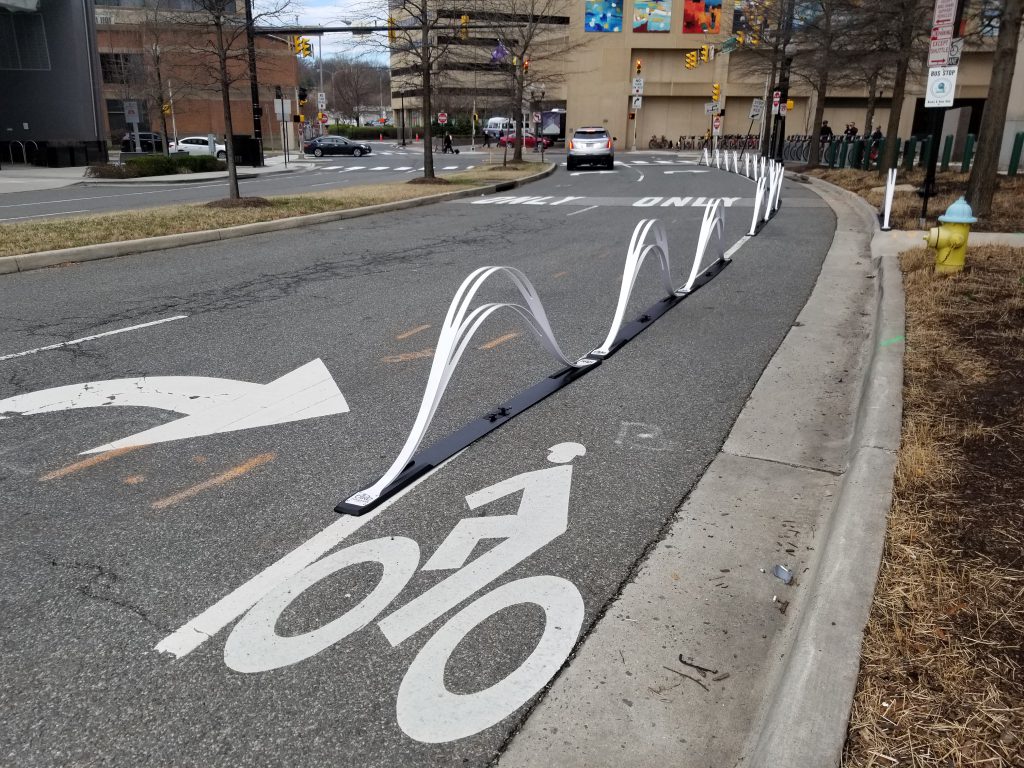
“Wave Delineator” bikeway barriers on Potomac Avenue in Crystal City. Image by BeyondDC licensed under Creative Commons.
You may have seen the plastic bollards installed as part of the protected bike lanes on the E. North Ave. and E. Locust St. bridges. Or you might not have, as at least a few different drivers ran them over.
The white bollards have been temporarily replaced by something with a bit more contrast, orange construction barrels. But the city doesn’t intend to use the barrels as a long-term solution.
“We realize the flexible delineators used on North and Locust were not able to withstand the multiple hits they incurred from motor vehicle traffic and are looking into a variety of options for providing additional separation on our protected bike lanes,” Department of Public Works Multimodal Transportation Manager Michael Amsden told Urban Milwaukee.
One, the Wave Delineator, replaces the individual posts with a connected plastic structure that gives the appearance of a short wall. “The Wave Delineator is ideal for temporary pop-up bike lanes when communities want to create a demonstration protected lane or direct bike traffic during day or week-long events,” reads the website of manufacturer Bike Fixation. They’ve been used for temporary installations across the country, including in Madison.
The second, DezignLine BikeRail, uses a steel rail to connect a series of plastic posts much closer together than the city deployed them on the two bridges. “Street maintenance crews in northern climates appreciate the snowplow-friendly anchoring system, making for easy snow removal. There is also clearance underneath the rail which ensures storm water drainage,” says system manufacturer Dero on its website.
“We have not decided on a product to date, and want to ensure that whatever we test is visible, durable, and cost-effective,” Amsden told Urban Milwaukee.
Whatever product the city elects to try next, they’ll have a growing number of locations to deploy it. As part of the construction of The Hop streetcar line, new protected bike lanes were added to E. Kilbourn Ave. and a north-south corridor with a protected bike lane is also envisioned for Downtown.
Original Configuration
Potential Replacements
Current Configuration
If you think stories like this are important, become a member of Urban Milwaukee and help support real independent journalism. Plus you get some cool added benefits, all detailed here.
Transportation
-
Congestion Pricing Cuts Air Pollution in New York City
 Dec 14th, 2025 by Jeff Wood
Dec 14th, 2025 by Jeff Wood
-
FTA Tells Milwaukee to Crack Down on Fare Evasion — Even Where Fares Don’t Exist
 Dec 12th, 2025 by Graham Kilmer
Dec 12th, 2025 by Graham Kilmer
-
Will GOGO’s Bus Service Ever Get Going?
 Dec 9th, 2025 by Jeramey Jannene
Dec 9th, 2025 by Jeramey Jannene


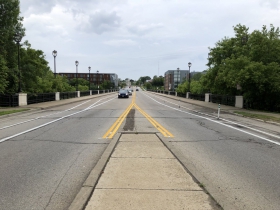
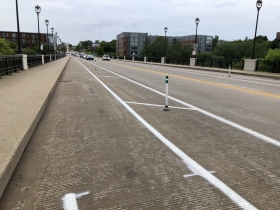
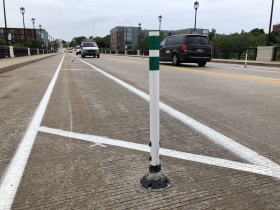
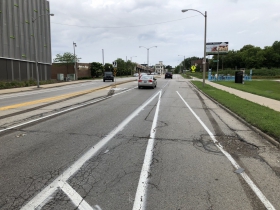
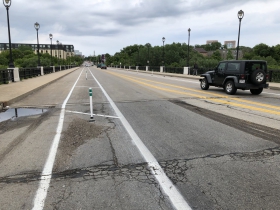
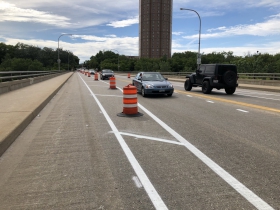
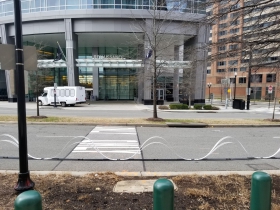
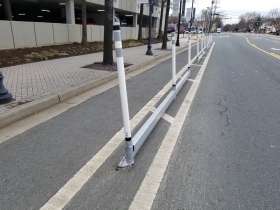
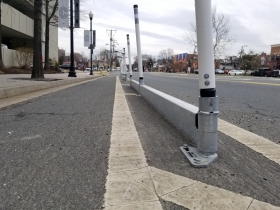
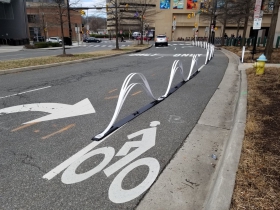
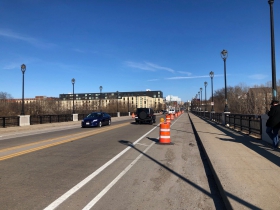
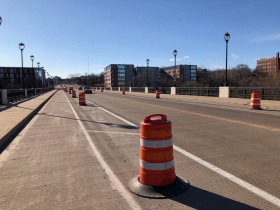



















One of the difficulties lies in the fact that both these protected bike lanes (Locust & North) are on bridges and there are strict regulations that limit adding weight to bridges and/or drilling bolts into bridges, as these can theoretically compromise the structural integrity of a bridge. A barrier that is not too heavy and which can be adhered to the surface is likely the answer for these bridges. On streets like Kilbourn, however, there is greater opportunity for much more substantial, permanent, fixed barriers that can be bolted right into the street.
I see people driving in the bike lanes all the time–particularly in parts of the city where there are few bikers. Not sure how you are going to stop that from happening, short of cement barriers.
Get out and bike. The research also says that the more bikers there are the safer we bikers are. See “Walkable City Rules” by Jeff Speck
@Barbara Yes more bikers = safer bikers. One way to encourage more bikers is better bike infrastructure such as what’s being considered.